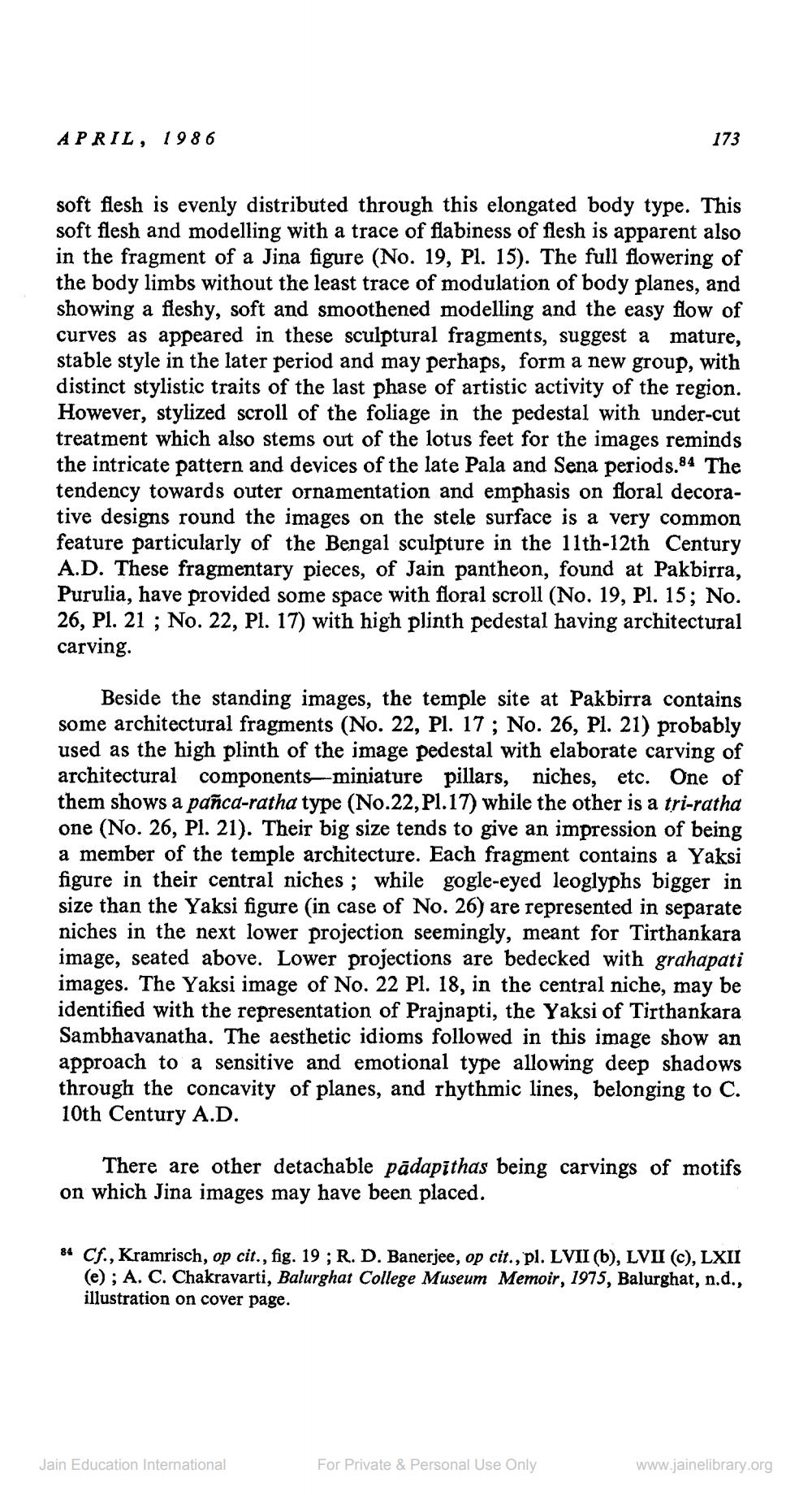________________
APRIL, 1986
173
soft flesh is evenly distributed through this elongated body type. This soft flesh and modelling with a trace of flabiness of flesh is apparent also in the fragment of a Jina figure (No. 19, Pl. 15). The full flowering of the body limbs without the least trace of modulation of body planes, and showing a fleshy, soft and smoothened modelling and the easy flow of curves as appeared in these sculptural fragments, suggest a mature, stable style in the later period and may perhaps, form a new group, with distinct stylistic traits of the last phase of artistic activity of the region. However, stylized scroll of the foliage in the pedestal with under-cut treatment which also stems out of the lotus feet for the images reminds the intricate pattern and devices of the late Pala and Sena periods.84 The tendency towards outer ornamentation and emphasis on floral decorative designs round the images on the stele surface is a very common feature particularly of the Bengal sculpture in the 11th-12th Century A.D. These fragmentary pieces, of Jain pantheon, found at Pakbirra, Purulia, have provided some space with floral scroll (No. 19, Pl. 15; No. 26, Pl. 21 ; No. 22, Pl. 17) with high plinth pedestal having architectural carving.
Beside the standing images, the temple site at Pakbirra contains some architectural fragments (No. 22, Pl. 17; No. 26, Pl. 21) probably used as the high plinth of the image pedestal with elaborate carving of architectural components--miniature pillars, niches, etc. One of them shows a panca-ratha type (No.22,Pl.17) while the other is a tri-ratha one (No. 26, Pl. 21). Their big size tends to give an impression of being a member of the temple architecture. Each fragment contains a Yaksi figure in their central niches; while gogle-eyed leoglyphs bigger in size than the Yaksi figure in case of No. 26) are represented in separate niches in the next lower projection seemingly, meant for Tirthankara image, seated above. Lower projections are bedecked with grahapati images. The Yaksi image of No. 22 Pl. 18, in the central niche, may be identified with the representation of Prajnapti, the Yaksi of Tirthankara Sambhavanatha. The aesthetic idioms followed in this image show an approach to a sensitive and emotional type allowing deep shadows through the concavity of planes, and rhythmic lines, belonging to C. 10th Century A.D.
There are other detachable pädapithas being carvings of motifs on which Jina images may have been placed.
84 Cf., Kramrisch, op cit., fig. 19; R. D. Banerjee, op cit., pl. LVII (b), LVII (C), LXII
(e); A. C. Chakravarti, Balurghat College Museum Memoir, 1975, Balurghat, n.d., illustration on cover page.
Jain Education International
For Private & Personal Use Only
www.jainelibrary.org




